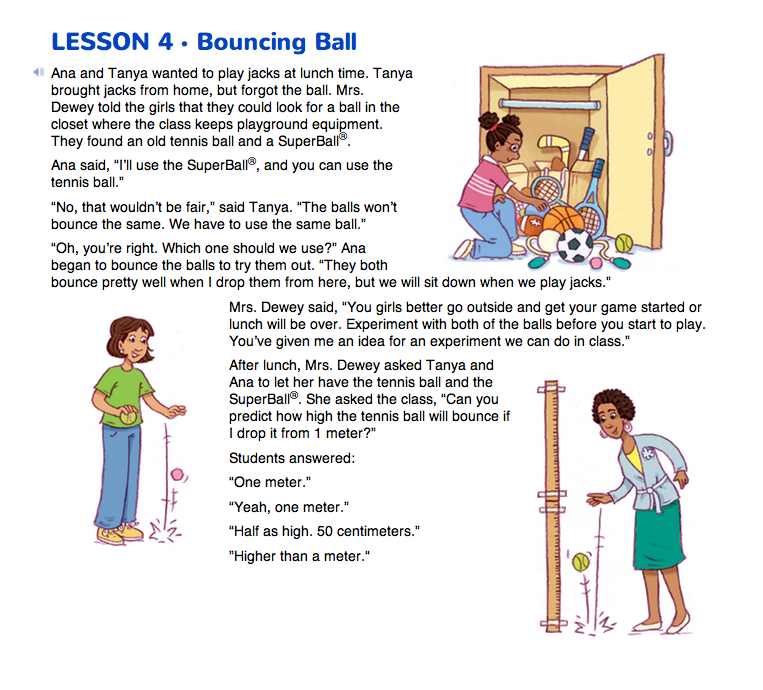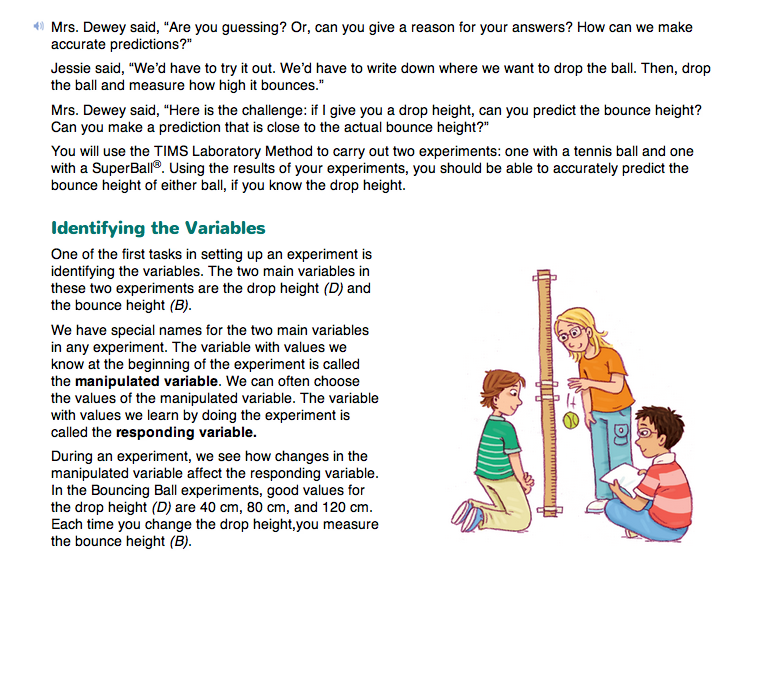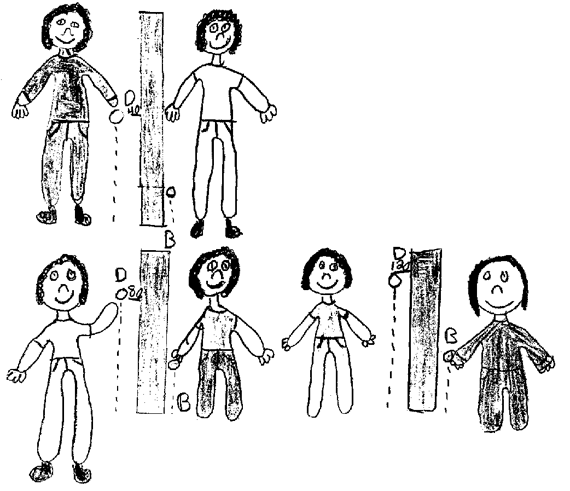Identify Manipulated and Responding Variables. Read the opening vignette on the Bouncing Ball pages in the Student Guide. One important aspect of this lab is the identification of the manipulated variable, the responding variable, and the controlled, or fixed variables. Use the discussion in the Identifying the Variables section on the Bouncing Ball pages to introduce these terms to your class.
If your students have done experiments in previous grades, as well as the labs in Unit 1 (Arm Span vs. Height) and Unit 2 (Perimeter vs. Length), they should be familiar with most aspects of the TIMS Laboratory Method. However, the use of the terms manipulated and responding variable will be new to all students. Use the following discussion prompts to help students identify these variables and understand the steps in the lab. Figures 1 and 2 show student drawings of the experimental setup.
Show the class the lab setup.
- If I give you a drop height, do you think you can predict how high the ball will bounce in centimeters?
As you drop the tennis ball from various heights, ask:
- Can you predict how high the ball will bounce? Does the ball bounce higher than the drop height? As high as the drop height? Lower than the drop height? Half as high as the drop height?
- What would help us make accurate predictions? (Try out the balls. Test some drops. Measure the bounces. Collect some data and look for a pattern in the relationship.)
- In our experiment, we will drop the ball from different heights and then measure the bounce height. What are the two main variables? (The drop height and the bounce height.)
- How many drop heights should we try? What should those heights be? (Depending on your students' experience, you may or may not want to let them choose the drop heights. To be able to make accurate predictions, students will need to use at least three drop heights that are high enough so that they can accurately measure the bounce height. The heights recommended in the Student Guide are 40 cm, 80 cm, and 120 cm. See the Content Note for a discussion about choosing values for the manipulated variable.)
At this point you can incorporate Questions 1–5 in the Student Guide into the class discussion. If students have trouble answering the first three questions, you can rephrase them as suggested below.
- The two main variables in an experiment are called the manipulated and responding variables. The manipulated variable is the variable with values we know at the beginning of the experiment. Which variable, the drop height or the bounce height, is the manipulated variable in this experiment (Question 1)? (the drop height)
- The responding variable is the variable with values we learn by doing the experiment. What is the responding variable (Question 2)? (the bounce height)
- What other variables might affect the bounce height besides the drop height? What should stay the same (fixed variables) in the experiments so we know that the change in the bounce height is caused by the change in drop height and not by a change in something else? What things should stay the same so the experiments are fair (Question 3)? (The type of ball will be the same in each experiment. The surface of the floor. The way we drop the ball—dropping it gently, not adding any force. The same ball should be used for each trial.)

Choosing Values for the Manipulated Variable. Good choices of values for the manipulated variable allow students to see patterns in the data. Choosing values for the manipulated variable that are multiples of the lowest value allows students to see multiplicative patterns in the values of the responding variable. For example, if the drop height doubles, students will be able to see whether the bounce height doubles as well. This is clearly shown in the sample data in Figure 3.
Draw a Picture. Once students can identify the variables and understand the procedure, they are ready to draw a picture. A student's picture is shown in Figure 2. Note that this student clearly labeled the manipulated and responding variables, with B for Bounce Height and D for Drop Height, and showed the three values for the drop height.
Use students' pictures, Questions 1–3 in the Student Guide and the Bouncing Ball Feedback Box Assessment Master to assess students' abilities to identify the variables as Drop Height and Bounce Height; identify variables that are fixed; show the procedure for the investigation; and label the variables in their drawing [E1].

















